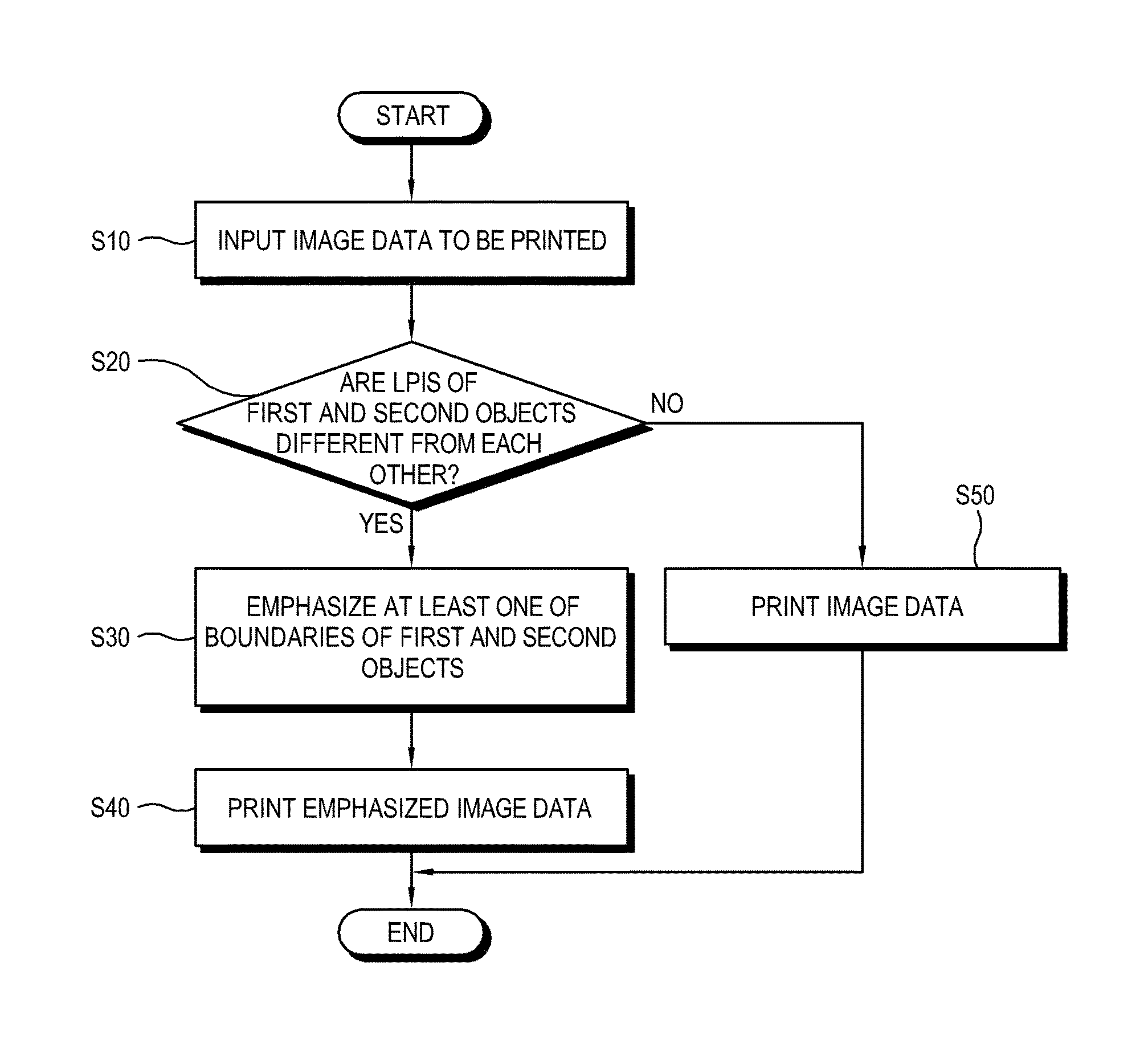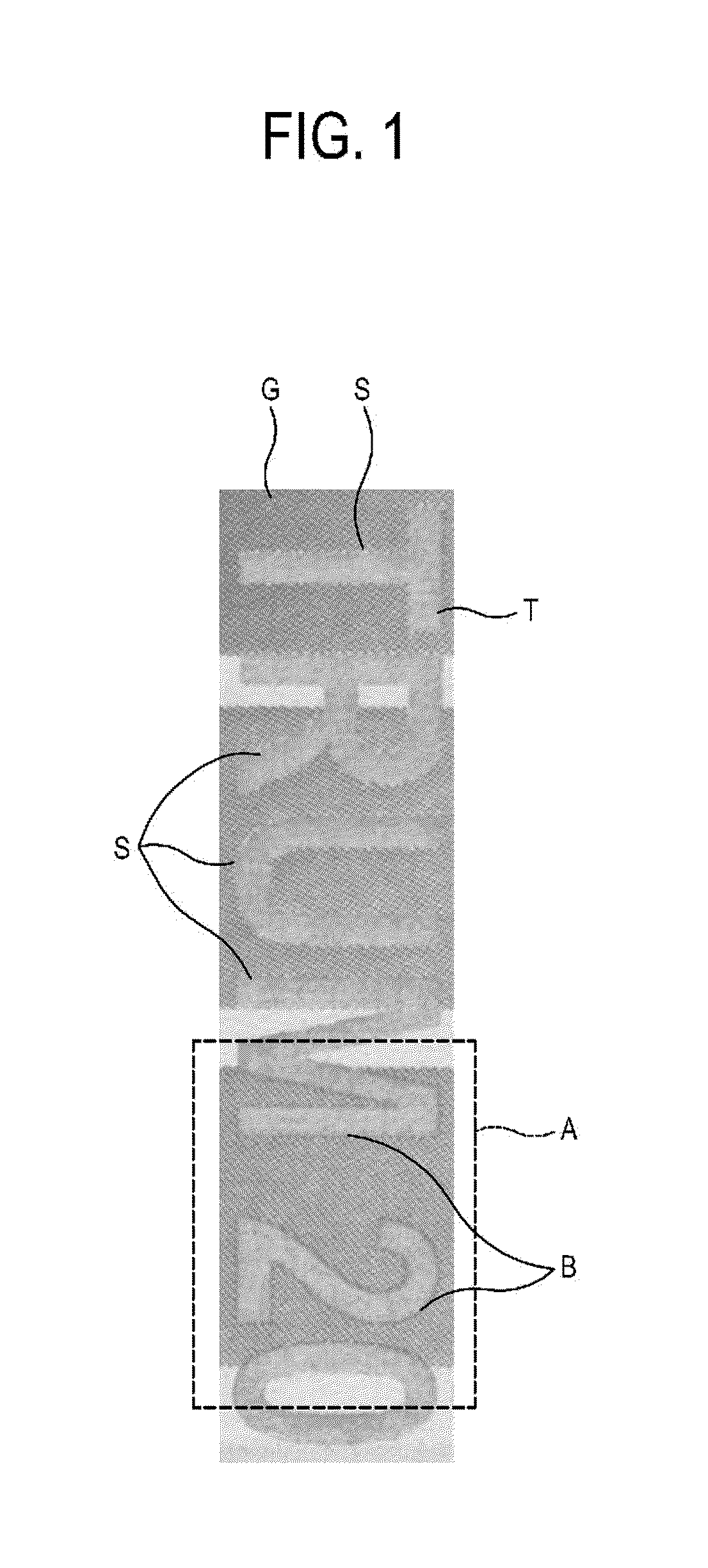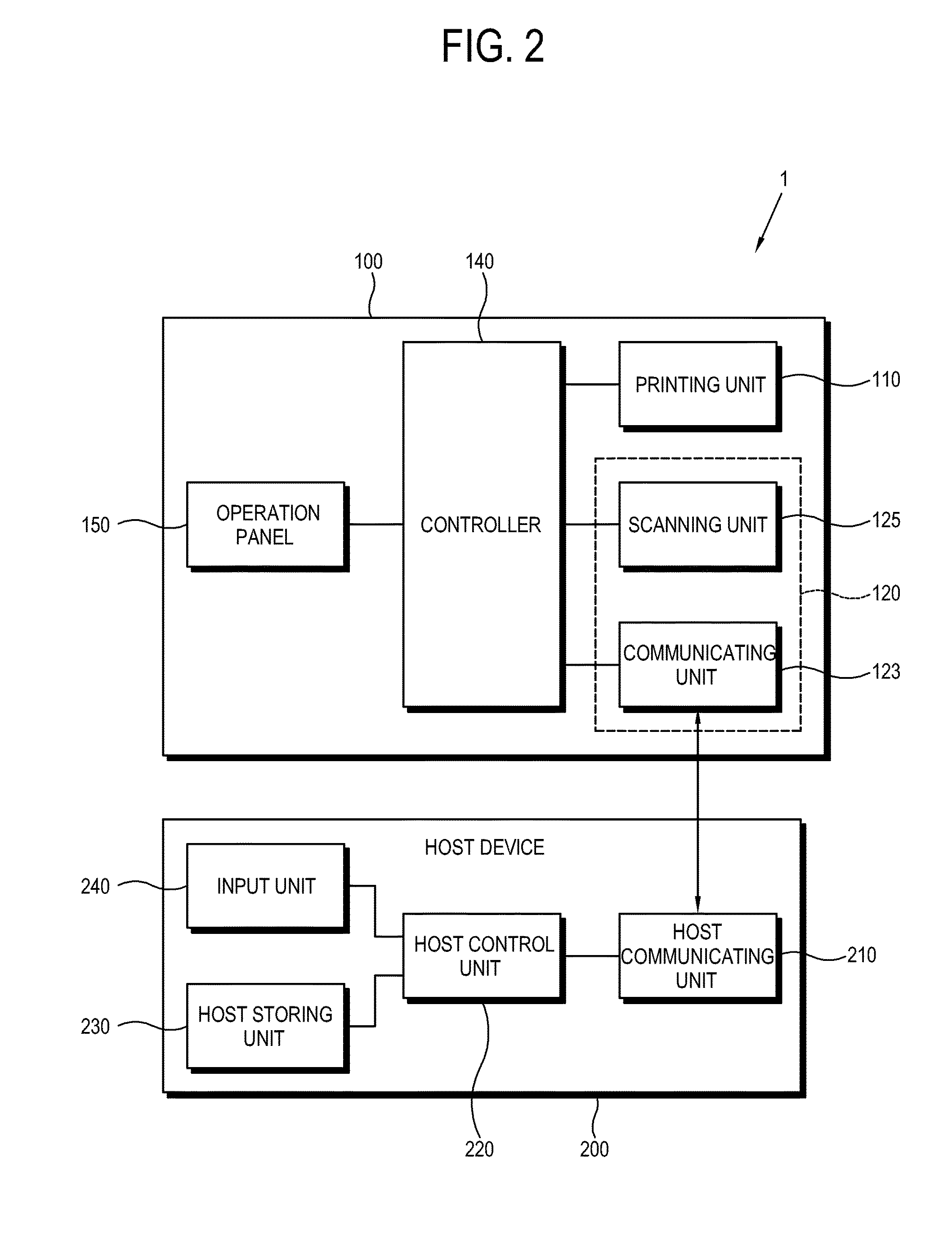Image forming apparatus that emphasizes a boundary between two objects using a halftoning process
a technology of image forming and halftone, which is applied in the direction of digital output to print units, instruments, digitally marking record carriers, etc., can solve the problems of low reliability of boundary detection algorithms and insufficient detection of the boundary of text (t)
- Summary
- Abstract
- Description
- Claims
- Application Information
AI Technical Summary
Benefits of technology
Problems solved by technology
Method used
Image
Examples
first embodiment
[0046]In the following embodiments, for the purpose of clarity, the same components are denoted by the same reference numerals throughout the drawings, and explanation thereof will be representatively given in a first embodiment but will be omitted in other embodiments.
[0047]As shown in FIG. 2, an image forming system 1 according to an exemplary embodiment of the invention includes an image forming apparatus 100 and a host device 200 which is connected to and communicates with the image forming apparatus 100.
[0048]The host device 200 includes an input unit 240, a host communicating unit 210 for transmitting image data to be printed to the image forming apparatus 100, a host storing unit 230 for storing the image data, and a host control unit 220 for controlling the host device 200 as a whole.
[0049]The input unit 240 may include one of a keyboard, a mouse and a touch pad. Alternatively, other known types of inputs may be employed.
[0050]The host communicating unit 210 may include at l...
second embodiment
[0085]In a printing method of the image forming system in accordance with the invention, image data to be printed is first input (S110), as shown in FIG. 5.
[0086]Next, it is determined whether or not adjacent pixels of the input image data belong to first and second objects of different types (S120). The adjacent pixels belonging to the objects of different types may be found using tag information indicating which object corresponds to each pixel of the image data.
[0087]If it is determined that the adjacent pixels belong to the objects of different types (YES in S120), the adjacent pixels are detected as boundaries of the first and second objects (S130). Here, if only one of the boundaries of the first and second objects is to be emphasized as in S150, which will be described later, only the boundary of an object to be emphasized may be detected.
[0088]If it is determined that the adjacent pixels do not belong to the objects of different types (NO in S120), the input image data is co...
third embodiment
[0093]In a printing method of the image forming system in accordance with the invention, image data to be printed is first input (S210), as shown in FIG. 6.
[0094]Next, it is determined whether or not adjacent pixels of the input image data belong to first and second objects of different types (S220).
[0095]If it is determined that the adjacent pixels belong to the objects of different types (YES in S220), the adjacent pixels are detected as boundaries of the first and second objects (S230). While reliability is deteriorated if the boundaries are detected based on change in brightness (gray scales) in the conventional art, this embodiment provides even higher reliability of boundary detection by detecting the boundaries based on tag information included in the image data.
[0096]Next, the detected boundaries are emphasized (S240). Here, both of the detected boundaries may be emphasized. Here, the boundaries may be emphasized by making a boundary concentration higher than an internal con...
PUM
 Login to View More
Login to View More Abstract
Description
Claims
Application Information
 Login to View More
Login to View More - R&D
- Intellectual Property
- Life Sciences
- Materials
- Tech Scout
- Unparalleled Data Quality
- Higher Quality Content
- 60% Fewer Hallucinations
Browse by: Latest US Patents, China's latest patents, Technical Efficacy Thesaurus, Application Domain, Technology Topic, Popular Technical Reports.
© 2025 PatSnap. All rights reserved.Legal|Privacy policy|Modern Slavery Act Transparency Statement|Sitemap|About US| Contact US: help@patsnap.com



